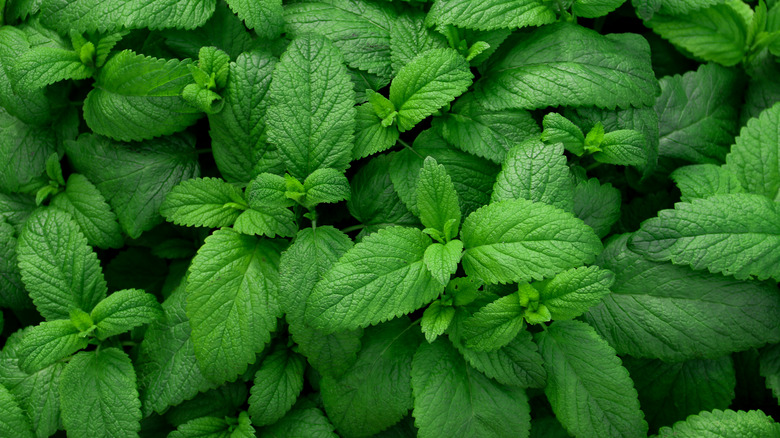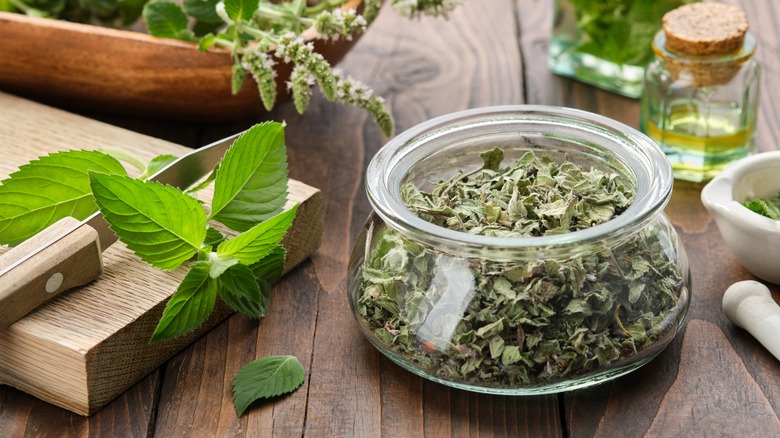Mint Vs. Peppermint: What's The Difference?
Mint is everywhere. It is in our food and drinks to lighten them with its refreshing herbaceous flavor. It is also in our over-the-counter medicine like vapor rub and even cough drops as well as some cold medicines. Your grandmothers may have rubbed peppermint oil on your feet when you were sick. Or you may have brewed yourself a nice steaming hot cup of peppermint tea to ward off your winter cold. Using mint in home remedies for your health is not a bad idea and its use is backed up by dietitian nutritionist, Cara Marrs. Marrs iterates that peppermint can help ease breathing, nausea, indigestion, and irritable bowel syndrome (via UC Health).
The reason mint is so good at easing our ailments is because it contains menthol. According to the American Lung Association, menthol is a chemical found in both peppermint and spearmint which gives a soothing yet chilling sensation which helps to subside bodily hurts both internally and externally. If you've ever popped a piece of peppermint gum and immediately felt like it was freezing your entire mouth, you have experienced the effects of menthol.
But not all mints are built the same. Like with all other plant life, there are multiple varieties under every umbrella term, and the differences between these subcategories can be startling.
Minty freshness
To be clear, "mint" is an overarching term for over a dozen plants, but for our purposes, we will be comparing spearmint (what most people think of as the basic mint) and peppermint.
Peppermint is a type of mint with high amounts of menthol — about 30% more than spearmint according to Medical News Today. In comparison, the spearmint herb only has 0.5% menthol, making it have severely less power when it comes to health application. Spearmint seems mellow when compared to the more aggressive smell and taste of peppermint.
MasterClass advises that if you are preparing a cocktail or a sweet meal (especially one with chocolate), use peppermint because it pairs better with heavier flavors due to its natural intensity. But when it comes to subtler dishes like pesto or spring rolls, the soft sweet notes of the spearmint are better suited for the meal. Peppermint tends to suit winter-themed drinks and dishes because they have more depth and can balance out the menthol, whereas spearmint folds in well with spring and summer meals due to its light flavor.
So, be careful when picking out your mints, or things could taste very different than what you expected.

